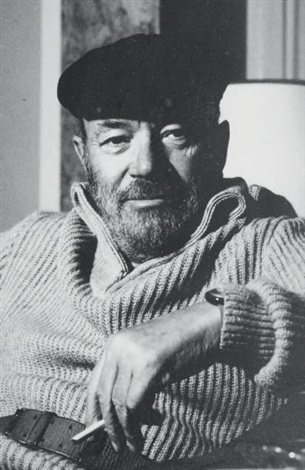Panayiotis Vassilakis (1925-2019)
Born in 1925 in Athens, Panayiotis Vassilakis also known as Takis, was a pioneer of kinetic art. He grew up in Greece during a period marked by successive wars. A self-taught artist by conviction, he started his artistic career in his early twenties in 1946, despite his family’s disapproval.
In 1952, he set up his first studio with childhood friends Minos Argyrakis and Raimondos in the Anakasa district of Athens. His first pieces were mostly iron sculptures and plaster busts, inspired by his first inspirations, Ancient Greece as well as the works of Pablo Picasso and Alberto Giacometti.
In 1954 he settled in Paris to pursue his artistic career.

View full biography
Born in 1925 in Athens, Panayiotis Vassilakis also known as Takis, was a pioneer of kinetic art. He grew up in Greece during a period marked by successive wars. Self- taught artist by conviction, he started his artistic career aroung the age of 20 years old, in 1946, despite the aversion of his family for his field.
In 1952, he created his first atelier with his childhood friends Minos Argyrakis and Raimondos in Anakasa in Athens. His first creations was mostly iron sculptures and busts of plaster, inspired by his first inspirations, the antic greece and the work of Pablo Picasso or Alberto Giacometti.
In 1954 he arrived in Paris to poursuit his artistic career.
He worked several month at Brancusi atelier then travelled several times between Paris and London.
Those two cities inspired him for his first kinetic artwork. He found his inspiration among the radar, antennas, and technolo- gical creation and the energy underneath.
He defined himself as someone «obsessed with the concept of energy». His goal, through his art is to show the invisible of our environnement.
In 1960, he realised the performing at the Galerie Iris Clert in Paris «L’impossible – un Homme dans l’espace» (The Impossible – a Man in the Space) in collaboration with his friend the poet from south africa Sinclair Beiles.
He moved for the Massachussetts in 1968 for a scholarship of research in the MIT, and more precisely for its Center of Advanced Visual Studies. During this period, he created a serie of electromagnetic sculp- tures then in a second time, he developed another serie of hydromagnetic.
When he came back in Paris in 1974, he started new sculptures in bronze, erotic this time exploring this same notion of attraction force.
In 1986, he came back in Greece where he founded the Research Center for the Art and the Sciences. Multidisciplinary artist, he developped also scenography or musical compositions for plays, and also performing, developping the idea of an moving art, with several dimensions. He died in 2019 in Greece.
Takis works are today in the most important private and public collections such as the Centre Georges Pompidou in Paris, the MoMA, the Guggenheim or the Tate Modern.





